Science
How to watch this weekend's shadowy Penumbral Lunar Eclipse – The Weather Network US
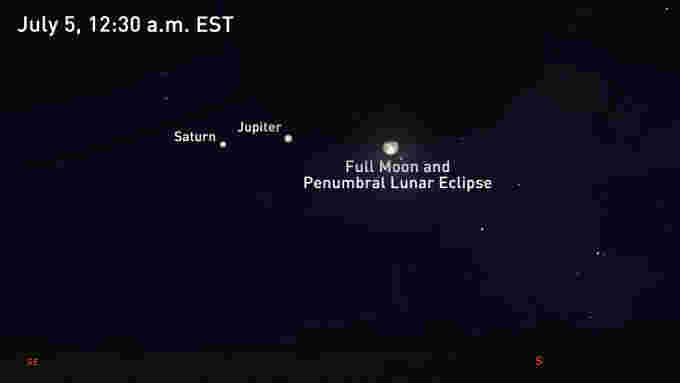
Clear skies Saturday night? Be sure to head outside to catch a lunar eclipse along with two of the solar system’s brightest planets.
On the night of July 4-5, 2020, the Full Moon will be hanging out near Jupiter and Saturn from dusk until dawn. If we keep a very close eye on the Moon throughout the night, though, we’ll get an extra treat – a penumbral lunar eclipse.
The view of the southern night sky on July 5, 2020, at 12:30 a.m. EST. Credit: Stellarium/Scott Sutherland
The lunar eclipse starts at just after 11 p.m. EST, it reaches its maximum at 12:30 a.m. EST, and it ends just before 2 a.m. EST. Since the eclipse occurs at one specific time for everyone, though, viewers from across Canada will need to adjust that timing to their clocks, as shown in the table below:
- NST – Starts 12:37 a.m.; Max at 2:00 a.m.; Ends 3:22 a.m.
- AST – Starts 12:07 a.m.; Max at 1:30 a.m.; Ends 2:52 a.m.
- EST – Starts 11:07 p.m.; Max at 12:30 a.m.; Ends 1:52 a.m.
- CST – Starts 10:07 p.m.; Max at 11:30 p.m.; Ends 12:52 a.m.
- MST – Starts 9:07 p.m.; Max at 10:30 p.m.; Ends 11:52 p.m.
- PST – Starts 8:07 p.m.; Max at 9:30 p.m.; Ends 10:52 p.m.
For those watching from anywhere west of Regina, Saskatchewan, the timing will put the eclipse during sunset and twilight hours, which will make it especially challenging to see.
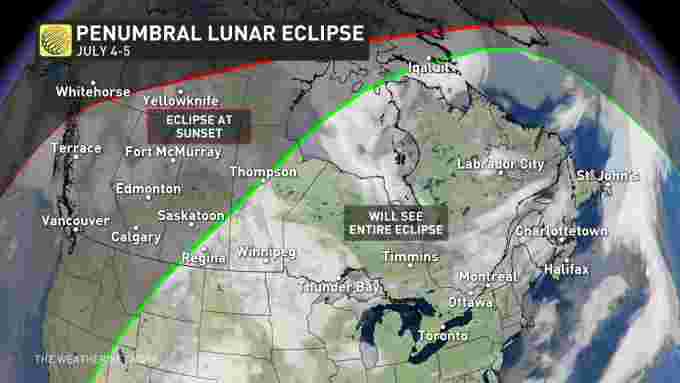

This particular lunar eclipse will be something of a challenge for everyone, though, no matter where you are.
A lunar eclipse occurs when the Full Moon passes through Earth’s shadow. Due to the tilt of its orbit around Earth, though, the Moon is usually well above or below the shadow when it lines up with Earth and the Sun. During a total lunar eclipse, the Full Moon passes right through the middle of the darkest part of the shadow (the umbra), which turns it a dusky red colour.
If the Full Moon passes through the diffuse outer part of the shadow (the penumbra), though, we see a penumbral lunar eclipse. In this case, the Moon doesn’t dramatically change colour. Instead, it dims slightly.
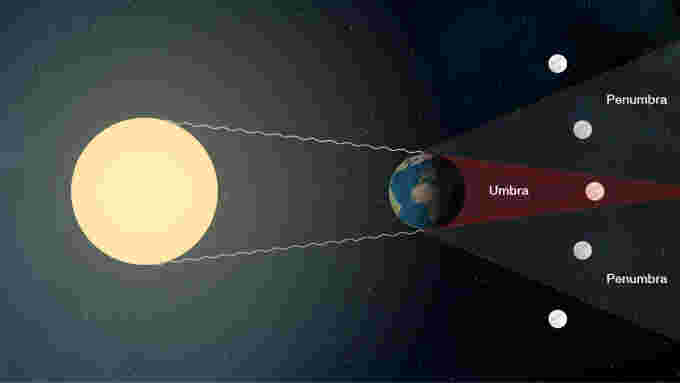

The difficulty comes not only from how slight the dimming is, but also due to the Moon’s apparent size in our sky. Viewers have to rely on their ability to pick out a small difference in brightness of an object that you can completely cover with a dime held at arm’s length. For this reason, a penumbral eclipse is best viewed closely through a telescope, a pair of binoculars, or by zooming in with a camera.
In this particular instance, the July 4-5 Full Moon is clipping the southern part of the Earth’s penumbra, with about half the Moon’s disk being emersed in the shadow. So, during the two hours and 45 minutes of the event, pay close attention to the northern half of the Moon, and especially its north pole, for your best chance to catch the dimming.
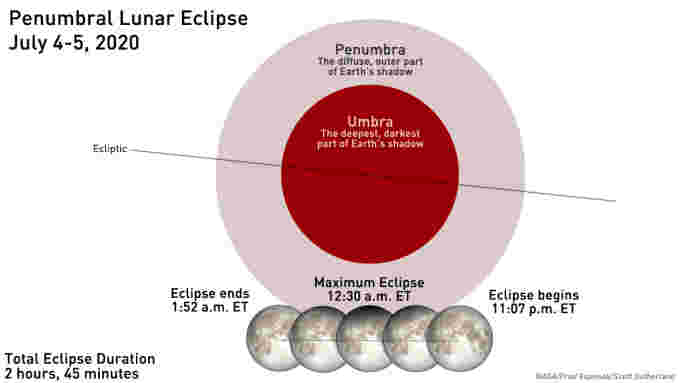

If you capture images or video of the eclipse, consider sharing them with us on Twitter, or posting them directly to our UGC gallery via your app or the website, so that everyone can see!
Sources: NASA | RASC | With files from The Weather Network
WATCH BELOW: SEE EVERY VIEW OF THE MOON FOR 2020 IN LESS THAN 5 MINUTES
Science
Giant prehistoric salmon had tusk-like teeth for defence, building nests: study – CP24


Brenna Owen, The Canadian Press
Published Wednesday, April 24, 2024 7:27PM EDT
Last Updated Wednesday, April 24, 2024 7:27PM EDT
The artwork and publicity materials showcasing a giant salmon that lived five million years ago were ready to go to promote a new exhibit, when the discovery of two fossilized skulls immediately changed what researchers knew about the fish.
Initial fossil discoveries of the 2.7-metre-long salmon in Oregon in the 1970s were incomplete and had led researchers to mistakenly suggest the fish had fang-like teeth.
It was dubbed the “sabre-toothed salmon” and became a kind of mascot for the Museum of Natural and Cultural History at the University of Oregon, says researcher Edward Davis.
But then came discovery of two skulls in 2014.
Davis, a member of the team that found the skulls, says it wasn’t until they got back to the lab that he realized the significance of the discovery that has led to the renaming of the fish in a new, peer-reviewed study.
“There were these two skulls staring at me with sideways teeth,” says Davis, an associate professor in the department of earth sciences at the university.
In that position, the tusk-like teeth could not have been used for biting, he says.
“That was definitely a surprising moment,” says Davis, who serves as director of the Condon Fossil Collection at the university’s Museum of Natural and Cultural History.
“I realized that all of the artwork and all of the publicity materials and bumper stickers and buttons and T-shirts we had just made two months prior, for the new exhibit, were all out of date,” he says with a laugh.
Davis is co-author of the new study in the journal PLOS One, which renames the giant fish the “spike-toothed salmon.”
It says the salmon used the tusk-like spikes for building nests to spawn, and as defence mechanisms against predators and other salmon.
The salmon lived about five million years ago at a time when Earth was transitioning from warmer to relatively cooler conditions, Davis says.
It’s hard to know exactly why the relatives of today’s sockeye went extinct, but Davis says the cooler conditions would have affected the productivity of the Pacific Ocean and the amount of rain feeding rivers that served as their spawning areas.
Another co-author, Brian Sidlauskas, says a fish the size of the spike-toothed salmon must have been targeted by predators such as killer whales or sharks.
“I like to think … it’s almost like a sledgehammer, these salmon swinging their head back and forth in order to fend off things that might want to feast on them,” he says.
Sidlauskas says analysis by the lead author of the paper, Kerin Claeson, found both male and female salmon had the “multi-functional” spike-tooth feature.
“That’s part of our reason for hypothesizing that this tooth is multi-functional … It could easily be for digging out nests,” he says.
“Think about how big the (nest) would have to be for an animal of this size, and then carving it out in what’s probably pretty shallow water; and so having an extra digging tool attached to your head could be really useful.”
Sidlauskas says the giant salmon help researchers understand the boundaries of what’s possible with the evolution of salmon, but they also capture the human imagination and a sense of wonder about what’s possible on Earth.
“I think it helps us value a little more what we do still have, or I hope that it does. That animal is no longer with us, but it is a product of the same biosphere that sustains us.”
This report by The Canadian Press was first published April 24, 2024.
Science
Nasa's Hubble marks 34th anniversary with stunning view of Little Dumbbell Nebula – The Times of India


In celebration of its 34th anniversary, Nasa‘s Hubble Space Telescope has once again wowed astronomers and space enthusiasts alike by capturing an extraordinary image of the Little Dumbbell Nebula. This latest image offers a vivid glimpse into the complexities of a planetary nebula, demonstrating Hubble’s enduring capabilities in its extended mission.
The Little Dumbbell Nebula, also known as Messier 76, is one of the faintest objects in the Messier catalog and has intrigued astronomers for its intricate structure and dual-lobed shape. This planetary nebula, located approximately 2,500 light-years away in the constellation Perseus, represents a brief stage in the life cycle of a moderate-sized star like our sun.
Dr. Jennifer Wiseman, a senior scientist at Nasa’s Goddard Space Flight Center, expressed her admiration for the new imagery: “This beautiful nebula is what remains after a star like our own sun has exhausted the bulk of its nuclear fuel and shed its outer layers. The vibrant colors and intricate structures visible in the nebula are a telescope’s way of painting the portrait of the final stages of stellar evolution.”
The Little Dumbbell Nebula, despite its faintness, shines brightly in the detailed images provided by Hubble, allowing scientists to study aspects of the nebula that are rarely visible. The images highlight the dense, glowing gas and complex layers of material expelled from the dying star at the center of the nebula.
According to Dr. Wiseman, “Hubble’s high-resolution capabilities allow us to examine the fine details within the nebula, helping us understand how stars expel their material and the dynamics of this expulsion process. This image is more than just a picture; it’s a deep dive into the life of stars.”
Since its launch on April 24, 1990, Hubble has revolutionized our understanding of the universe, from the dynamics of galaxies to the atmospheres of exoplanets and the distribution of dark matter. Its contributions continue to support and complement data gathered by newer space observatories.
As Hubble continues its journey in space, the scientific community remains enthusiastic about the ongoing contributions it will bring to our understanding of the cosmos. Dr. Wiseman remarked, “Every image from Hubble is a new lesson in our cosmic curriculum.”
These observations not only contribute significantly to our knowledge of the life cycle of stars but also continue to highlight the critical role of Hubble in the exploration and understanding of our universe. As Hubble enters another year in orbit, its legacy of discoveries promises to keep inspiring both the scientific community and the public.
Science
SpaceX launch marks 300th successful booster landing – Phys.org
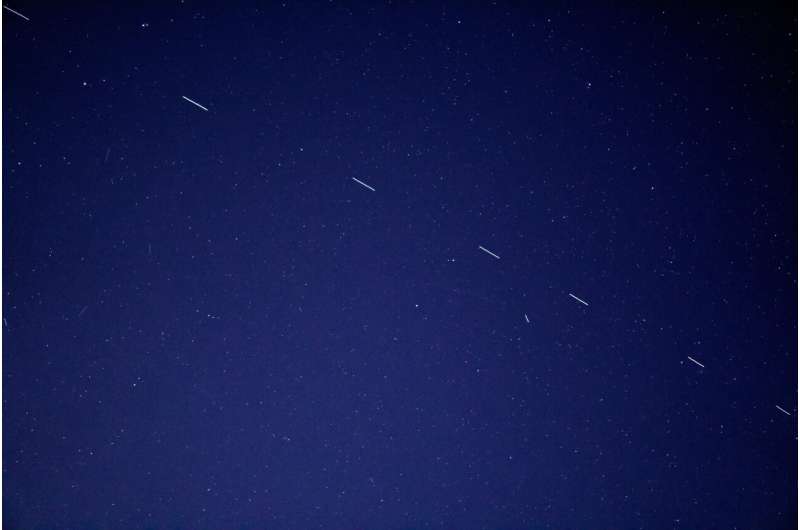

SpaceX sent up the 30th launch from the Space Coast for the year on the evening of April 23, a mission that also featured the company’s 300th successful booster recovery.
A Falcon 9 rocket carrying 23 of SpaceX’s Starlink internet satellites blasted off at 6:17 p.m. Eastern time from Cape Canaveral Space Force Station’s Space Launch Complex 40.
The first-stage booster set a milestone of the 300th time a Falcon 9 or Falcon Heavy booster made a successful recovery landing, and the 270th time SpaceX has reflown a booster.
This particular booster made its ninth trip to space, a resume that includes one human spaceflight, Crew-6. It made its latest recovery landing downrange on the droneship Just Read the Instructions in the Atlantic Ocean.
The company’s first successful booster recovery came in December 2015, and it has not had a failed booster landing since February 2021.
The current record holder for flights flew 11 days ago making its 20th trip off the launch pad.
SpaceX has been responsible for all but two of the launches this year from either Kennedy Space Center or Cape Canaveral with United Launch Alliance having launched the other two.
SpaceX could knock out more launches before the end of the month, putting the Space Coast on pace to hit more than 90 by the end of the year, but the rate of launches by SpaceX is also set to pick up for the remainder of the year with some turnaround times at the Cape’s SLC-40 coming in less than three days.
That could amp up frequency so the Space Coast could surpass 100 launches before the end of the year, with the majority coming from SpaceX. It hosted 72 launches in 2023.
More launches from ULA are on tap as well, though, including the May 6 launch atop an Atlas V rocket of the Boeing CST-100 Starliner with a pair of NASA astronauts to the International Space Station.
ULA is also preparing for the second launch ever of its new Vulcan Centaur rocket, which recently received its second Blue Origin BE-4 engine and is just waiting on the payload, Sierra Space’s Dream Chaser spacecraft, to make its way to the Space Coast.
Blue Origin has its own rocket it wants to launch this year as well, with New Glenn making its debut as early as September, according to SLD 45’s range manifest.
2024 Orlando Sentinel. Distributed by Tribune Content Agency, LLC.
Citation:
SpaceX launch marks 300th successful booster landing (2024, April 24)
retrieved 24 April 2024
from https://phys.org/news/2024-04-spacex-300th-successful-booster.html
This document is subject to copyright. Apart from any fair dealing for the purpose of private study or research, no
part may be reproduced without the written permission. The content is provided for information purposes only.
-



 Politics23 hours ago
Politics23 hours agoOpinion: Fear the politicization of pensions, no matter the politician
-



 Science23 hours ago
Science23 hours agoNASA Celebrates As 1977’s Voyager 1 Phones Home At Last
-



 Politics22 hours ago
Politics22 hours agoPecker’s Trump Trial Testimony Is a Lesson in Power Politics
-
Media16 hours ago
B.C. online harms bill on hold after deal with social media firms
-
Media22 hours ago
B.C. puts online harms bill on hold after agreement with social media companies
-
Business22 hours ago
Oil Firms Doubtful Trans Mountain Pipeline Will Start Full Service by May 1st
-
Media21 hours ago
Trump poised to clinch US$1.3-billion social media company stock award
-
Real eState22 hours ago
Judge Approves $418 Million Settlement That Will Change Real Estate Commissions






